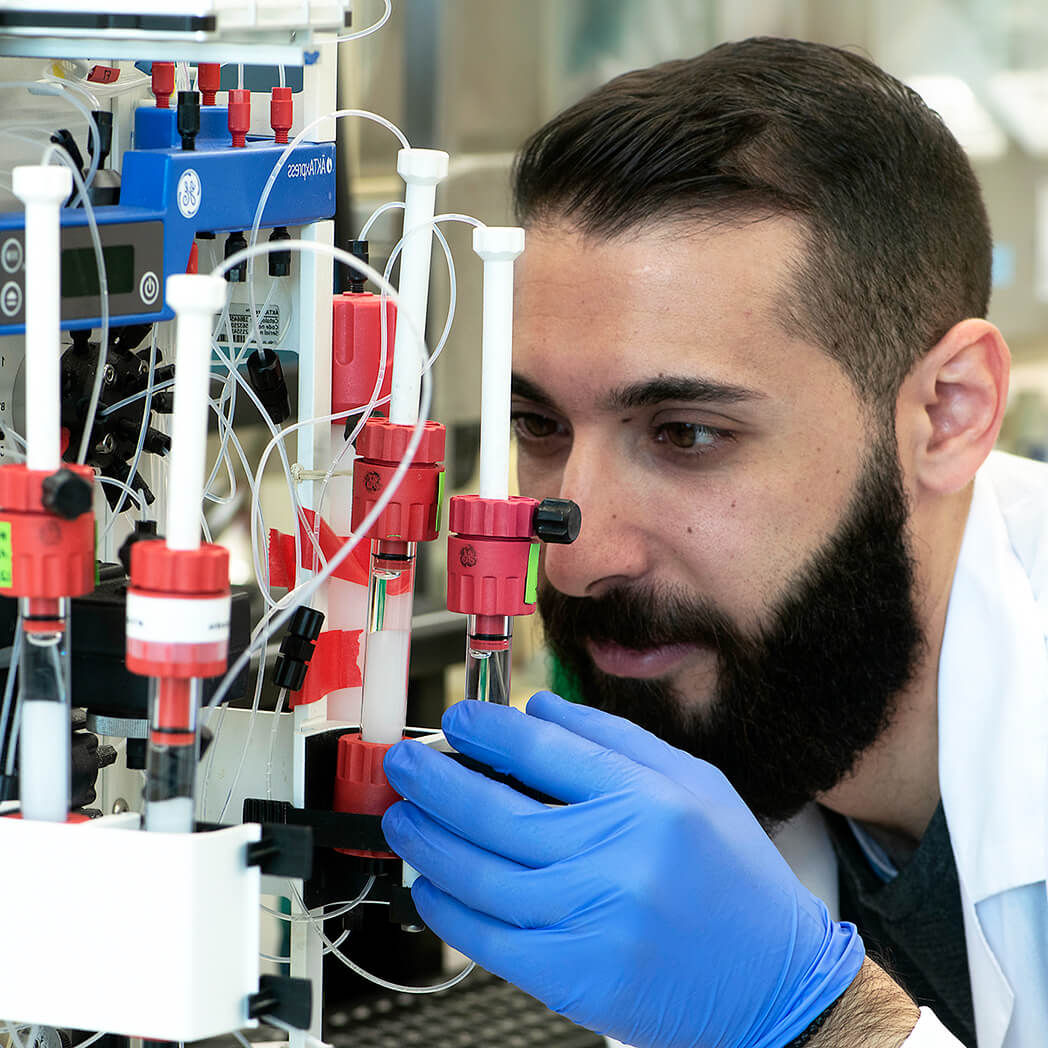Overview
Cat #:
APC-102
Host: Rabbit
Type: Polyclonal
Form: Lyophilized
Alternative Name Potassium voltage-gated channel subfamily C member 3, KSHIIID, SCA13
Accession (Uniprot) Number Q01956
Gene ID Q01956
Application key:
CBE- Cell-based ELISA, FC- Flow cytometry, ICC- Immunocytochemistry, IE- Indirect ELISA, IF- Immunofluorescence, IFC- Indirect flow cytometry, IHC- Immunohistochemistry, IP- Immunoprecipitation, LCI- Live cell imaging, N- Neutralization, WB- Western blot
Species reactivity key:
H- Human, M- Mouse, R- Rat
For research purposes only, not for human use
Specifications
Properties
Immunogen
- Peptide KSPITPGSRGRYSRDRAC, corresponding to amino acid residues 701-718 of rat KCNC3 (Accession Q01956). Intracellular, C-terminus.
Homology Human, mouse-identical.
RRID AB_2040170.
Purity Affinity purified on immobilized antigen.
Form Lyophilized powder. Reconstituted antibody contains phosphate buffered saline (PBS), pH 7.4, 1% BSA, 0.05% NaN3.
Form Lyophilized powder. Reconstituted antibody contains phosphate buffered saline (PBS), pH 7.4.
Isotype Rabbit IgG.
Specificity Recognizes only splice variant KV3.3-1.
Standard quality control of each lot Western blot analysis.
Peptide confirmation Confirmed by amino acid analysis and mass spectrometry.
Storage before reconstitution The antibody ships as a lyophilized powder at room temperature. Upon arrival, it should be stored at -20°C.
Reconstitution 25 µl, 50 µl or 0.2 ml double distilled water (DDW), depending on the sample size.
Reconstitution 0.2 ml double distilled water (DDW).
Antibody concentration after reconstitution 0.8 mg/ml.
Storage after reconstitution The reconstituted solution can be stored at 4°C for up to 1 week. For longer periods, small aliquots should be stored at -20°C. Avoid multiple freezing and thawing. Centrifuge all antibody preparations before use (10000 x g 5 min).
Applications
Applications
Western blot
- Rat brain membranes (1:200).
 Western blotting of rat brain membranes:1. Anti-KCNC3 (KV3.3) Antibody (#APC-102), (1:200).
Western blotting of rat brain membranes:1. Anti-KCNC3 (KV3.3) Antibody (#APC-102), (1:200).
2. Anti-KCNC3 (KV3.3) Antibody, preincubated with KCNC3/Kv3.3 Blocking Peptide (#BLP-PC102).
Immunohistochemistry
- Rat brain sections.
Immunocytochemistry
- Mouse spiral ganglia (SGNs) (Chen, W.C. and Davis R.L. (2006) Hear. Res. 222, 89.).
Scientific Background
Scientific Background
Scientific background
KV3.3 is a member of the Shaw-type family of voltage-gated K+ channels that includes four members (KV3.1-3.4).
KV3 subfamily members inactivate very rapidly and therefore are thought to play a role in the repolarization of action potentials and to facilitate repetitive high frequency firing.
KV3.3 is mostly localized in the brain, although it has been observed in vascular smooth muscle cells and eye epithelium. In the brain its expression pattern largely overlaps that of the KV3.1 channel suggesting that they may form functional heteromers. Indeed, mouse knockouts of both KV3.1 and KV3.3, but not either channel alone, display severe motor defects.
Last Update: 25/03/2025
